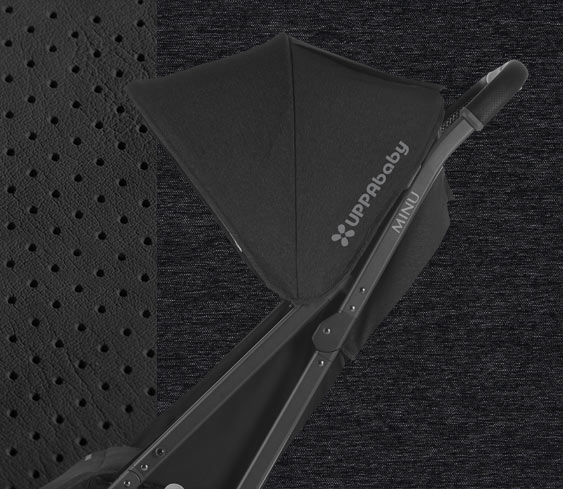
Na podróże – te mniejsze i większe.®
Model Minu oferuje szereg udogodnień, jest lekki i łatwo się składa. To idealny sprzęt na codzienne spacery i dalekie wyprawy.
Stylowa spacerówka

Składanie jednym ruchem, jedną ręką
Wózek Minu złożysz bez trudu jednym ruchem, jedną ręką! Możesz nawet w tym samym czasie trzymać dziecko drugą ręką.
Płynna jazda
Zawieszenie z amortyzatorami na wszystkich kołach zapewnia podwyższony komfort Tobie i Twojemu dziecku.


Przestronne i wygodne siedzisko z obsługą ustawień odchylenia jedną ręką
Obszerne siedzisko wózka Minu dostosowuje się do potrzeb rosnącego dziecka i może być używane do czasu, gdy dziecko osiągnie wagę 15 kg. Wielopozycyjna leżanka pozwala Twojemu dziecku zrelaksować się podczas snu lub oglądać świat dookoła, oferując elastyczność, której potrzebuje Twój ruchliwy maluch.
Duży i łatwo dostępny kosz
Do przechowywania niezbędnych akcesoriów, torby na pieluchy i wszystkich innych rzeczy, które schowasz w nim po drodze.


Wentylowany daszek i rozkładana osłona przeciwsłoneczna z filtrem UPF 50+
Wysuń i rozłóż osłonę słoneczną, by chronić swoje dziecko przed szkodliwym promieniowaniem UV i bezpiecznie cieszyć się słoneczną pogodą. Otwierane okienko wentylacyjne peekaboo pozwala mieć dziecko cały czas pod kontrolą bez zmiany rytmu spaceru.

Zabierz go ze sobą lub schowaj
Wózek Minu waży niecałe 7 kg i jest wyposażony w rączkę i pas do przenoszenia, więc bez problemu zabierzesz go wszędzie ze sobą. Wózek Minu można łatwo złożyć i zapakować do plecaka podróżnego, który zabezpiecza go podczas transportu samolotem, a Ty masz wolne ręce.
Rączka ze skóry Premium
Rączka obszyta w 100% skórą licową nadaje wózkowi klasycznego, eleganckiego wyglądu i zapewnia lepszy chwyt podczas pchania wózka.


Akcesoria
Więcej komfortu od chwili narodzin
Model Minu można przekształcić w idealny wózek do relaksu dla noworodka. Zestaw Od Narodzin umożliwia przewożenie noworodków w pozycji leżącej, zapewniając im wygodę i bezpieczeństwo.


Kompatybilny z Mesa i-Size i nie tylko
Dzięki wygodnym adapterom łatwo wykorzystasz nasz fotelik samochodowy Mesa i-Size nie tylko podczas jazdy samochodem, ale też w trakcie spaceru. Adaptery pasują również do fotelików Maxi-Cosi®, Nuna®, Cybex oraz BeSafe®.
Niekończące się możliwości
Tackę na przekąski oraz barierkę możesz w łatwy sposób przymocować do wózka Minu za pomocą dołączonych adapterów.

Specyfikacja
Odpowiedni dla dzieci od 6 miesiąca życia do 15 kg
Rzeczywista waga (uwzględnia gondolę, koła, kosz)
6,7 kg
Wymiary po rozłożeniu:
90,2 cm x 52 cm x 104,1 cm
Złożony:
29,2 cm x 52 cm x 58,4 cm
Najważniejsze funkcje
- Po dodaniu akcesorium From Birth Kit produkt jest odpowiedni dla noworodków
- Przestronne siedzisko dla dziecka o wadze do 15 kg
- Regulowane ustawienia odchylenia
- Otwierane okienko wentylacyjne peekaboo
- Bardzo duży, łatwo dostępny kosz o ładowności do 9 kg
- Amortyzacja na wszystkich kołach
- Po dodaniu adapterów produkt pasuje do fotelika samochodowego dla niemowląt Mesa i-Size
- Rączka wózka obszyta 100% skórą licową
- Lekka, przenośna konstrukcja, pasek na ramię oraz torba do przechowywania
- Składanie jednym ruchem i jedną ręką, po złożeniu można go postawić





